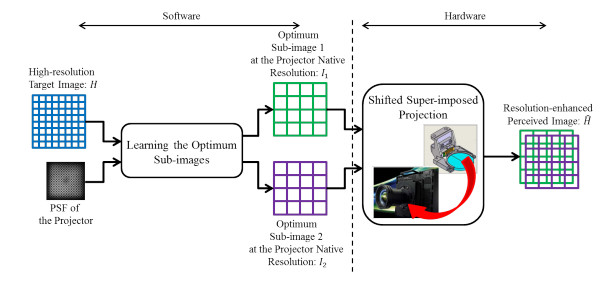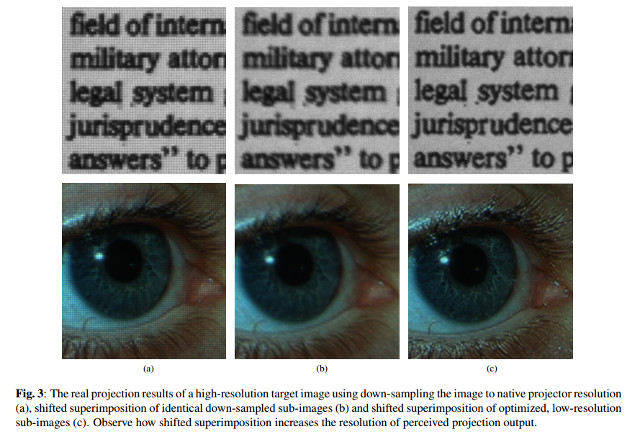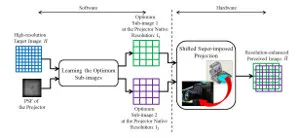One of the technologies that JVC has focused on is its e-Shift technology. This uses an optical element to project one image and then shift the optical path a half pixel in the diagonal direction to project a second image. This is done at a 120 Hz rate or 60 fps per combined image. The idea is to use a lower resolution projector to create an image that appears to have higher resolution due to the pixel/image shift. As we have reported previously, JVC can take an 8k source image, process it to create two sub-images, then project these using a 4k e-Shift projector. The resulting image quality, measured with a line pair resolution image, is close to the original 8k image in quality.
At SID, the University of Waterloo presented paper 35.3 that described what it called a “shifted Superposition” projector approach. This is essentially just what JVC does, but the team focused mostly on developing optimized algorithms for creating the two sub-images from the higher resolution source image. This can be a challenge as conventional down sampling will lose the high frequency details, which need to be retained to reconstruct the high resolution source using the lower resolution projector.
The team decided that its approach would be to evaluate the optical performance of the projector using the Point Spread Function (PSF) as the key to the analysis (find the impulse response of a linear system) (first figure).

The results of applying the algorithm is compared to two down sampling variations in the figure below. Clearly, the algorithm works very well in displaying fine details. The team did not compare the processed images to the original image, however. Nor has it investigated applying the algorithm to low resolution source images.


